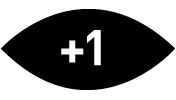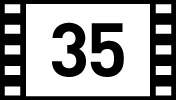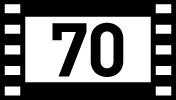

A few years back, Quentin Tarantino got pinned to a claim he casually made that he would only direct ten films in his career. His rationale was that most directors only have ten really good movies in them, and he doesn't want to end up like far too many old-timers of his craft, making mediocre pictures that feel like lesser versions of their earlier work. If this theory is correct, maybe Tarantino should have stopped three features ago with his inventive, subversive, and exquisitely written World War II Guys-on-a-Mission movie Inglourious Basterds (2009). But perhaps his supposition is all wrong, and a great director needs to make twenty or thirty pictures in order to nail ten great ones. Since Basterds, Tarantino has made two westerns, Django Unchained and The Hateful Eight. Both are highly enjoyable films, but it's difficult not to categorize them as exactly what the outspoken filmmaker might say about the later efforts of once-great older directors: they feel like sub-par retreads of previous work. I don’t know if Tarantino's ninth movie, Once Upon a Time ... in Hollywood, qualifies as his weakest picture, but it's his most disappointing because of the potential here for what this artist could have done with this subject matter.
Once Upon a Time... is set in 1969, the storied and turbulent year of so many significant events and changes in American culture. ’69 was the year that saw "three days of peace and music" at Woodstock but also four deaths at the Rolling Stones' massive free concert at the Altamont Speedway. It was the year of the moon landing and Richard Nixon's inauguration. An era of provincial, innocent Americana seemed to come to an end with the publication of the last weekly issue of The Saturday Evening Post. At the same time, a cultural revolution began when the Stonewall Riot launched the LGBT civil rights movement. ‘69 gave us the last public performance of The Beatles and the first public broadcast of Monty Python's Flying Circus. It will also be forever marked by the brutal Tate–LaBianca murders, in which members of Charles Manson's cult, “The Manson Family,” invaded the rented Los Angeles home of actress Sharon Tate and filmmaker Roman Polanski, killing Tate and her friends Jay Sebring, Wojciech Frykowski, and Abigail Folger. The killers returned the following night to another home, this time with Manson himself, and murdered supermarket executive Leno LaBianca and his wife, Rosemary. These horrific acts came to be viewed by many, especially in Hollywood, as the brutal end of the optimistic sixties.
For Tarantino fans like me, few concepts could sound more promising for the master of retro-culture appropriation and revitalization than to set one of his sprawling, character-driven narratives in 1969 Hollywood, at the point when Sharon Tate and Roman Polanski rent their home at 10050 Cielo Drive, but then to focus his story not on them but on their fictional neighbor. That neighbor is Rick Dalton (Leonardo DiCaprio), a middle-aged, alcoholic actor who made his name in a short-lived Western TV series, tried for a big screen career, and is now relegated to shooting guest-star spots on current shows headed up by younger stars. Rick's best pal is his longtime stunt double Cliff Booth (Brad Pitt), who is also past his prime and now employed as Rick's driver, assistant, and all-around right-hand man. When Rick isn't working, these two spend their time cruising in a Coupe DeVille around LA's canyon roads and downtown strips, drinking in its landmark watering holes, chain-smoking, shooting the breeze, and remembering their more illustrious recent pasts; that is until they accidentally get caught up with the Manson Family. This may all sound like perfect Tarantino fodder, but for anyone who might be anticipating an ingenious hybrid along the lines of David Fincher's Zodiac crossed with Tom Gries' Helter Skelter by way of Hal Needham's Hooper and Howard Hawks' Rio Bravo, you should maybe lower your expectations.
The film starts promisingly as if it might be this writer/director's most mature work since Jackie Brown (1997). Unlike most of his pictures, it is not a riff on a specific genre that plays out on a sprawling canvas of interconnected characters. It's a focused piece about a notorious and well-documented incident. It seems for a while as if Tarantino may forgo his usual nonlinear, episodic structure and his lazy reliance on subtitles and expository voiceovers. Perhaps he has something thematically different in mind for us than his last three films, which all used revenge-movie tropes to comment on historical evils. But no: Tarantino sticks with his now well-worn, diminishingly impactful concept of creating an alternative history that provides audiences with the cathartic thrill of retribution for crimes against humanity that were never adequately punished—or at least not punished in ways as viscerally fulfilling as a glorious third-act movie massacre.
In this case, however, enacting bloody revenge on the lost, brainwashed kids who made up the Manson cult is hardly as gratifying as doing the same to the leaders of the Nazi party in Inglourious Basterds or to those who benefited from the slave trade in Django Unchained; or, to a lesser degree, to the patriarchy in Kill Bill and Death Proof, and to institutionalized racism in The Hateful Eight. The Manson Family were guilty of unspeakable acts, but since Manson himself was not present when Sharon Tate and her friends were murdered—and Tarantino chooses to stick to the facts when it comes to which Manson Family members were there at Cielo Drive on the night of August 8, 1969—this movie's flights of vicarious revenge fantasy aren't even aimed at the truly guilty party. As a result, this climax not only feels far less satisfying than those of previous Tarantino pictures, it comes across almost as false scapegoating, which is a dubious justification for delighting in extreme cinematic violence.
Apart from the writer/director's signature obsessions and his ability to make references to arcane movies, actors, and obscure details about cinematic styles seem fresh and relevant to modern audiences, what Once Upon a Time in Hollywooddoes have going for it are its leads. DiCaprio and Pitt are the closest we have to old-school movie stars in today's fractured popular culture. They embody the fictional twosome with delightful details, humor, and authenticity. We fully buy them as these characters, not just movie stars playing dress-up, while at the same time, we feel a palpable sense of how much fun it must have been to make this picture, wear these clothes, light these cigarettes, and exist in these period surroundings. DiCaprio's inherent actorly emotionalism compliments Pitt's effortless, just-rolled-out-of-bed-and-gave-a-great-performance minimalism. These are mid-career highs for both stars: DiCaprio's best turn since Catch Me If You Can (2002) and Pitt's best since Moneyball (2007).
The inspirations for Dalton and Booth can be found in many little-remembered stars of the ‘60s and ‘70s—like Ed Burns, George Maharis, William Smith, and Tom Laughlin. Together, they come off like an alternate-reality version of Burt Reynolds and Hal Needham if Burt hadn't become a major movie star and Needham, consequently, a major director. Dalton's career mirrors Reynolds' early years in several ways, and Reynolds was slated to play George Spahn, the owner of the ranch Manson and his followers made their home, but he passed away before shooting on Once Upon a Time commenced and was replaced by a lackluster Bruce Dern.
Margot Robbie stars as Sharon Tate, perfectly capturing the enigmatic quality of this beautiful young actress and model whose promising life was tragically cut short by Manson's murderers. Tate will forever remain frustratingly unknowable since all she left behind are a handful of two-dimensional roles in mediocre movies and some stiff, awkwardly staged studio publicity material in which her personality doesn't register. The real-life Tate we can still see on film directly contrasts the stories Polanski and others who knew her well have recounted about what a dynamic, vivacious, and exceptional woman she was. Tate will always remain an impenetrable figure, and it's wise that Tarantino and Robbie do not attempt to create a complex, fleshed-out portrait of her.
We know from the get-go that Tate will cross paths with the fictional leads of this movie, and Tarantino spends endless amounts of time with each of them. We follow their everyday lives as if to build up anticipation of how they will inevitably come together on that fateful night. But we soon stop speculating and just start to enjoy watching these people going about their business. The entire first hour of Once Upon a Time in Hollywood consists of little more than the protagonists driving around, walking around, and hanging around LA. It would have been great if they had been blessed with the gift of Tarantino's signature dialogue, but they're not. A key reason fans of this filmmaker delight in the swollen lengths of his pictures is that those hefty running times provide multiple opportunities for us to bask in the glow of his wonderful monologues, rants, philosophical musings, and interpersonal exchanges—both the comedic kind and the ones filled with dramatic tension. But these characters don't talk much at all, and when they do, it often feels canned (or at least not up to Tarantino's usual standards). Booth mostly drives around listening to music and reflecting on the surroundings of his chosen city. Tate mostly walks around listening to music and taking in the city she's still discovering. Dalton often talks to himself—either to learn his lines, berate his bad choices, or try to figure out how to stay relevant in an industry that's passing him by.
Most of the good lines go to DiCaprio. The pep talks Dalton delivers to himself are truly hilarious. But the verbal set-pieces Tarantino is most famous for are anemic here. An early expository scene in which Dalton's agent (an actively bad Al Pacino) lays out the actor's downward career trajectory is such a far cry from the opening scene that introduced us to Christoph Waltz's Colonel Hans Landa in Inglourious Basterds; it feels like it came from a Tarantino imitator rather than from the genuine article. A much more successful exchange occurs later, on the set of one of Dalton's TV guest shots, where he chats with a precocious child actor (a sensational Julia Butters). Her professionalism, budding feminist self-confidence, and wide-eyed sincerity reduce Dalton to tears. The scene provides intriguing alternative commentaries either on how old-school dudes like Dalton (and retro-old-school dudes like Tarantino) may soon be replaced by a younger, more self-aware, less traditionally masculine generation or, inversely, on the naiveté of every younger generation that falsely believes their actions and behaviors are going to amount to something more substantial and morally superior than those who came before.
As astute and amusing as this scene is, it doesn't propel the narrative like similar scenes in the director's previous work. Likewise, the closest we get to the type of protracted, tension-ratcheting scene that sets Tarantino apart from all his contemporaries is a sequence in which Booth picks up a teenage hitchhiker (Margaret Qualley) and drives her to Spahn Ranch, the remote location where Manson has convinced the 80-year-old owner to allow him and his followers to live. Booth knows the ranch well from when it was used to film westerns, and while there, he encounters members of the Manson Family, including the soon-to-be infamous "Tex" Watson (Austin Butler), Susan Atkins (Mikey Madison), Patricia Krenwinkel (Madisen Beaty), and "Squeaky" Fromme (Dakota Fanning). But nothing of substance comes from these encounters, and the sequence hardly figures into the plot at all.
But, then again, this “hangout movie” has very little plot to speak of. Its three leads represent three phases of a typical Hollywood career: Tate is a rising star with a seemingly bright future ahead of her, Dalton is a falling star trying to stay relevant though he is past his prime, and Booth is a hard-working lifer on the fringes of the industry, no longer very employable but still remembered (though not exactly fondly) by his former colleagues. That should be enough for an enjoyable, possibly even thought-provoking entertainment, but there just isn't enough narrative to this picture on which to hang many significant ideas or observations.
It's difficult to know if Tarantino has prematurely settled into the safe position of giving his audience only what we expect from him, if fame and fortune have isolated him and diminished his wonderful ear for dialogue, or if the death of his editor Sally Menke, whom he always called his most important collaborator, precluded his last three features from coming together in the consummate way his first six did. Perhaps editor Fred Raskin (who cut the filmmaker's last three movies, as well as Guardians of the Galaxy, Bone Tomahawk, and some of the Fast & Furious entries) lacks the gift Menke had for reigning in the director's most self-indulgent tendencies and making each scene connect, come alive, and dazzle us. The editor's contribution is always difficult to pin down if you weren't present in the cutting room, so this is just speculation. But it's not unfair to say that Once Upon a Time in Hollywood, despite great costumes, set decoration, and special effects that evoke its era beautifully, is shot and cut blandly and covered with the most rudimentary set-ups of any Tarantino picture. The dialogue scenes lack visual flair, and the car scenes, often shot from the back seat, get downright monotonous well before the midpoint.
Of course, this tedious quality might be part of the point. After all, the guys Pitt and DiCaprio play are leading repetitive lives with little excitement—Booth once lived a life where he would challenge Bruce Lee to a fight, now he's reduced to beating up stoned, malnourished hippies foolish enough to mess with him. But watching these three characters meandering through the city, listening to the music of the day, looking at the billboards of the day, watching the TV shows of the day, and interacting with the famous personalities of the day, is meant to evoke a glorious past, even though it's done primarily through the eyes of two rather melancholy individuals. Once Upon a Time in Hollywood is, first and foremost, a reverential look back at a bygone era; a “what if” movie that invites us to imagine a 1960s that didn't have to come to an abrupt end. It explores how all works of art, pop culture, and even the coolest people in showbiz eventually lose the edge that made them special and grow less and less relevant as the years roll on. It's just a shame that the last theme seems to play out on such a meta-level in this movie.
NOTE: Unlike Django Unchained and The Hateful Eight, this film plays much better on repeat viewings. I saw Once Upon A Time... a second time on its official opening night (on 35mm with 700 others in the crowd) and enjoyed it far more than the preview screening I had attended two days earlier, after which I wrote my review. Seeing it again didn't make me change my opinions about the film or where it falls in my rankings for the year (the #1 two-star movie), but my focus shifted away from everything that didn't work for me onto everything that did. The "feel" of this movie, the evocative extratextual elements, and the elegiac aspects all came to the forefront. In reading what others have written in the weeks following, it seems that these are the aspects that have made most folks, especially those my age and older, revere this movie. I can't say those components override the sense of sloppy missed opportunity that is still my main takeaway, but I certainly experience many of the same emotions others have expressed while watching this film. Of all the think-pieces I've read about Once Upon A Time... this write-up from the Center of Los Feliz is a favorite of the many I came across.
https://mrpeelsardineliqueur.blogspot.com/2019/09/captive-on-carousel-of-time.html?m=1
After my third viewing, in January of 2025 off a 70mm print, I realized this is way better than a two-star movie—a disappointment for sure, but it's telling that I've been eager to rewatch this picture again and again much more than Django Unchained.
While this fantasy set during one of Hollywood's darkest incidents has fantastic leads and the potential to be Tarantino's most mature work yet, the director reverts to his now standard, diminishingly impactful main narrative concept, this time without the signature dialogue and delicious dramatic tension we've come to expect.







